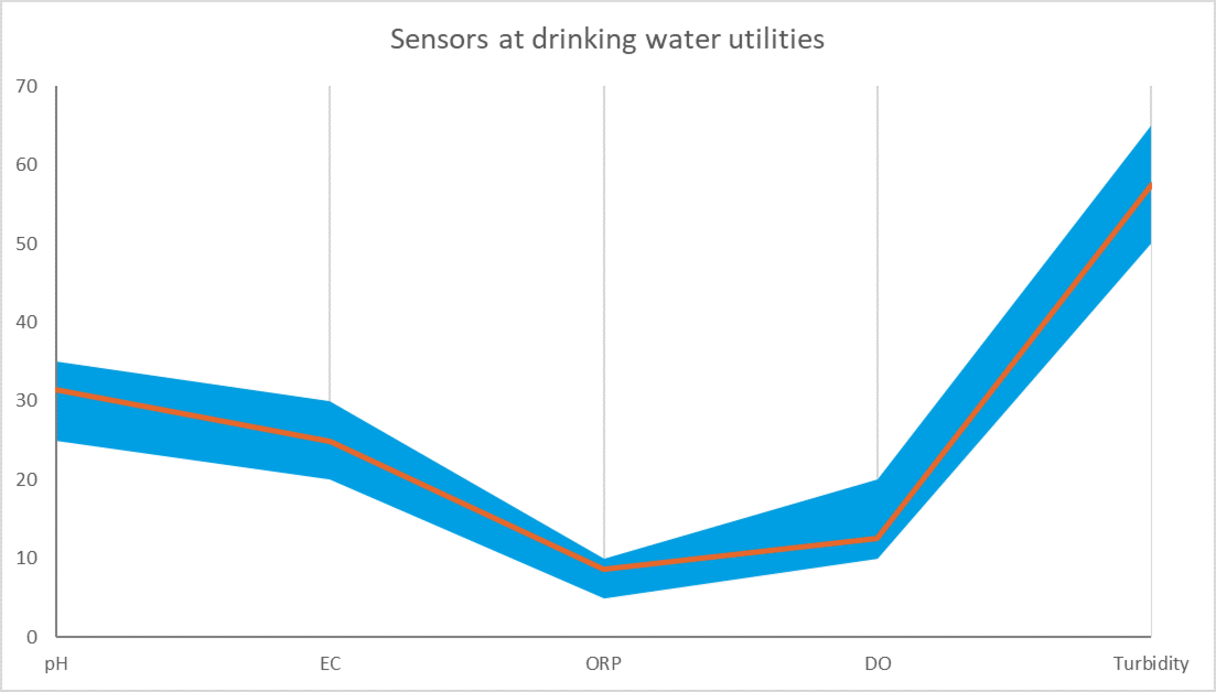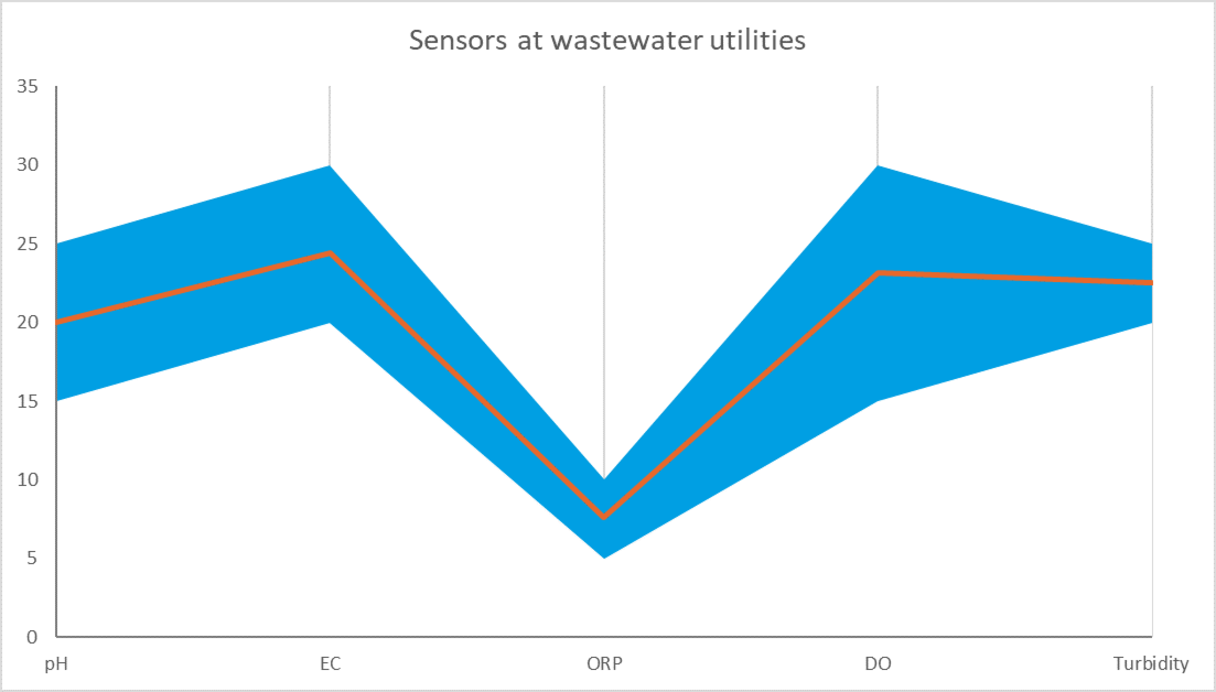Blog
In the past few weeks, the question of how many water quality sensors are used at drinking water and wastewater utilities has popped up several times. Many people seem to be interested in these numbers, for example to estimate potential market size, or to determine if a trend can be observed towards more online measurements as compared to laboratory analyses of the most important water quality parameters.
Investigation
Therefore, we decided to take a closer look at what types and how many sensors are deployed at these utilities. The Sensileau Sensor Platform and its predecessor, the Online Water Quality Sensors and Monitors Compendium, collects a lot of information on the use of online sensor technologies in the water industry, including the types and number of sensors in use. In this case, we selected 58 drinking water utilities and 56 wastewater utilities from Europe, North America, Australia, Africa and Asia for a further assessment, together representing around a thousand individual drinking water and wastewater treatment plants. The drinking water utilities produced an average of 680,000 m3 of drinking water per day, whereas the wastewater utilities processed on average 505,000 m3 per day. The five most commonly used sensors were assessed, i.e. sensors measuring pH, conductivity (EC), oxidation-reduction potential (ORP), dissolved oxygen (DO) and turbidity.
Outcomes
Out of the 58 drinking water utilities investigated, 33 indicated that they use online sensors for water quality monitoring purposes. 30 utilities deploy sensors for pH and conductivity, 29 use turbidity sensors, 14 use ORP sensors and 10 use dissolved oxygen sensors. 26 out of 56 wastewater utilities indicated that they use online sensors to monitor water quality within during transport or treatment. Just under half of the wastewater utilities (23) deploy sensors for dissolved oxygen, 19 use pH-sensors, 14 use turbidity sensors, 12 use ORP sensors and 10 use conductivity sensors.
The graphs show some of our findings. At drinking water utilities, turbidity sensors are the most commonly used sensors (on average about 55 per utility), followed by pH (31 per utility), EC (25) and DO (13). The bandwidth between the lowest and the highest number of sensors used per utility (indicated by the blue area) is relatively small as compared to the number of sensors used at wastewater utilities. Wastewater utilities measure conductivity, DO and turbidity the most (on average 23 sensors per utility). Both types of utilities measure ORP the least (on average 9 and 8 sensors per utility respectively).
Additional parameters
The utilities were also asked what other parameters they measure online and on-site. Drinking water utilities mostly mentioned free or total chlorine (18 and 15 utilities respectively) and spectral absorption coefficient (SAC; 17 utilities). For wastewater utilities, ammonium (16 utilities) and nitrate (13 utilities) are the most important additional parameters to be measured online.
The future of sensors in the water industry
We expect that these numbers will continue to increase in the coming years. Supporting technologies such as off-the-grid power supplies, new communication protocols and better data analysis tools enable utilities to increase the number of eyes and ears (and sometimes noses) in their treatment plants and during transport. A legislative push towards a more risk-based approach in drinking water production and distribution (such as in Europe) will further promote the use of online sensors for water quality monitoring, and the development of new and better measurement technologies. Water reuse and the recovery of valuable resources from wastewater will require wastewater utilities to gain better insight into their processes, and thus will also give a boost to the use of online water quality sensors.
At the Sensileau Sensor Platform, we continue to track these developments and report about them. Our published showcases present the success stories of water utilities all over the world. If you have an interesting showcase to share, please contact us.


